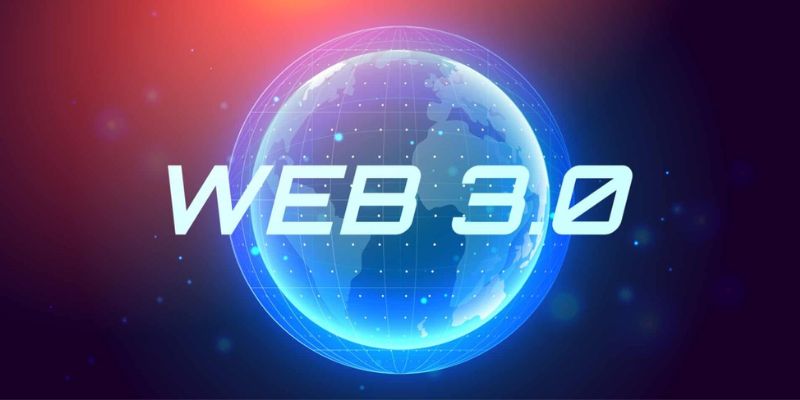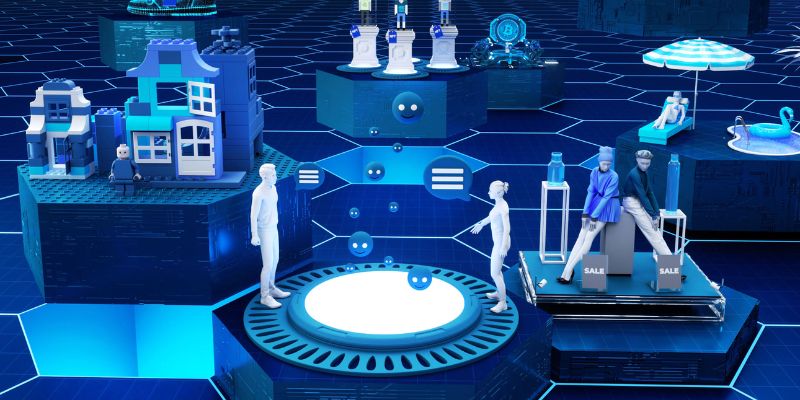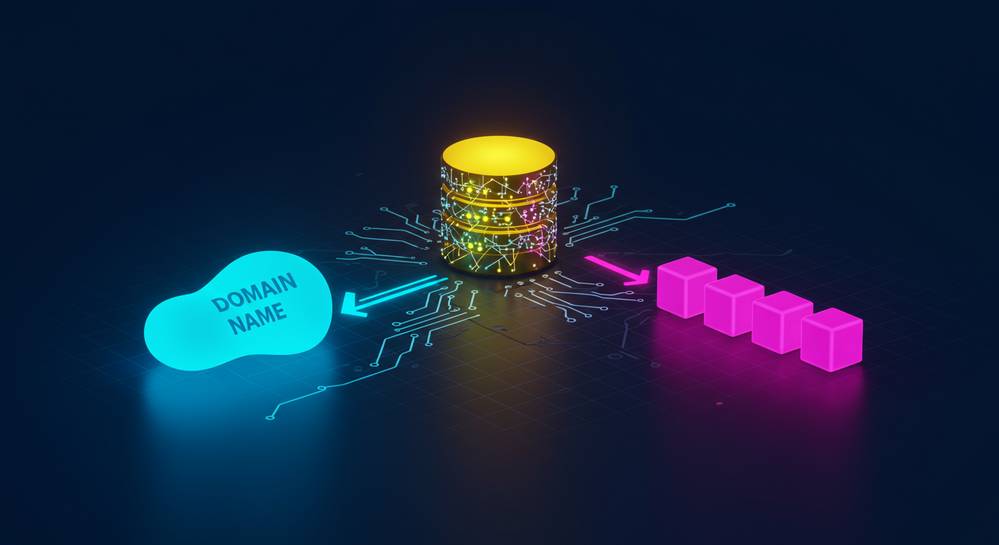Imagine a web where you hold the power. Get ready to dive deep into the future where everyone is buzzing about What is Web 3.0 and how will it change the internet? I’m here to unpack this digital evolution. Think about the internet today – it’s a bit like a one-way street. Companies decide what you see and how you see it. Web 3.0 turns these rules on their head. Let’s explore how this new internet is building a world that’s not just smart but also fair and secure for you. With blockchain at its heart, get set for a journey into an online universe that you control, changing everything you know about browsing, buying, and sharing. This is where you become a true digital citizen with sovereignty over your data. Welcome to Web 3.0, the frontier that is reshaping your digital life.
Understanding the Core of Web 3.0
The Evolutionary Path of the Internet
Do you ever ask how the internet works? It started simple but got complex. First, we had basic web pages. We clicked and read. That was Web 1.0. Then came Web 2.0. Now, we can share, like, and comment. It’s interactive! But there’s a catch. Big companies hold our data. That’s changing with Web 3.0. Our new internet is fair, safe, and open.
Web 3.0 is all about users having power. It’s like giving everyone a voice and a vote on the internet. We call this a decentralized web. Instead of one person in charge, it’s like everyone has a key. User control over data is the heart of Web 3.0. That means you decide who sees your info.
Defining Blockchain Technology in Web 3.0
So what’s blockchain? Think of it as a digital ledger. It’s where we record all transactions. Secure and for everyone to see. It puts trust in technology, not people.
Blockchain in Web 3.0 is a big deal. It keeps our info safe and sounds. You can make deals, share data, and know it’s locked tight. It’s like making a pinky promise with the internet. And guess what? It can’t be broken.
You might wonder about blockchain’s future. It’s everything from how we pay to protecting our online selves. It’s a big puzzle piece of Web 3.0. With it, the internet’s future looks bright. We’re talking about an internet where no single company rules. It’s a place where users come first.
The future of the internet is with Web 3.0. It’s faster, fairer, and more secure. Think of it this way—no more being just a user. You’re now a part-owner too. That’s Web 3.0 for you. And it’s not just coming; it’s already on its way.
In conclusion, blockchain and Web 3.0 are close friends. They work together for a better internet. One that’s safe, open, and full of opportunities. Whether it’s sharing photos, buying online, or just browsing, Web 3.0 is the new way to do it. It’s like the wild west of the web, but with rules we all agree on.
This new tech means big changes for everyone. For businesses, it’s a challenge but also a chance to grow. They have to think about data privacy and security like never before. And you, the user, you get back control. Think of your digital identity as a safe nobody can crack. And all of this is just the start.
Web 3.0 isn’t just another update. It’s a huge leap forward. It’s shaping an internet that’s fair and open for all. With blockchain, we make a web that’s not just a place to look. It’s a community where everyone has a part to play.

The Pillars of Web 3.0: Decentralization and Data Sovereignty
How Decentralized Web Transforms User Control Over Data
Imagine having the power over your data online. That’s what Web 3.0 offers. The web’s future we’re entering is very different from what we know today. How so? Right now, big companies hold your data. They track what you do, sell your info, and even sometimes get hacked. Web 3.0 changes this. It’s like a new superpower for everyday users—giving us the steering wheel for our data. This means you decide who to share with and what info to keep private.
Using blockchain technology, Web 3.0 lets us store data across many places. No single company can claim it. It’s kind of like a puzzle spread out so no one person has the full picture. But when you want, you put the pieces together. This is what we mean by “decentralized web”—it’s safer and puts you in charge. Plus, with Web 3.0, you won’t need to remember a bunch of passwords. Your digital identity stays with you across the internet.
Those pesky ads following you around? They get less creepy. You can say who gets to send you ads and what info they use. It’s a big step up for data privacy and security. Think about it: only seeing what you actually care about, no more random ads for things you don’t want.
Exploring Smart Contracts and Decentralized Applications
Smart contracts are game-changers. What are they? Simply put: they’re like promises in code form. If A happens, B follows—automatically. No middlemen. For example, you buy an online service; the smart contract sees the payment and instantly unlocks the service for you. Goodbye, waiting for someone to flip the switch!
So where do these run? On what we call decentralized applications, or DApps. They live on a network spread across many computers. No one can shut them down or mess with them. Say you make art. You can sell it directly to your fans. They pay you, and the art is theirs right away. No company in the middle taking a cut or controlling the deal.
DApps can do pretty much everything standard apps can do. But because they’re on the blockchain, everything is public, tracked, and tamper-proof. It means trust is built-in. you don’t just hope it works; you can see it working.
In Web 3.0, DeFi, or decentralized finance, opens doors too. Goodbye limits of traditional banks! Hello, lending and borrowing money on your own terms. It’s smarter money for a smarter internet.
And don’t forget about NFTs. They’re like collector’s items but digital and unique. They prove that an item, say digital art or a music file, is one-of-a-kind. It’s not just about owning stuff. It’s about identity and community in the virtual space.
Web 3.0 is not “coming soon”; it’s unfolding now. It’s bold, it’s big, and it’s building internet you can truly call your own. The future of the internet is looking bright, with all of us getting a piece of the pie. Get ready to take back control and be a true owner online. This is Web 3.0—welcome to your internet, powered by you!

Empowering Users and Creators in the Web 3.0 Ecosystem
Strengthening Data Privacy and Security
What’s different about Web 3.0 from what we use now? Picture a web where you’re the boss of your data. That’s Web 3.0. Unlike today’s internet, it’s not about huge companies holding all your info. It’s about giving the power back to you. How does it work? Well, it uses blockchain. This is like a magic book that nobody can mess with. When your data goes onto blockchain, it gets super safe and can’t be changed without your say-so.
Web 3.0 also uses something called “distributed ledger technology”. This spreads out information across lots of places. So if one bit gets attacked, your stuff is still safe somewhere else. It’s like having lots of mini safes instead of one big one. That way, if a bad guy gets into one, he can’t get to everything.
Why is this good for you? Imagine shopping online without worrying someone could steal your card info. That stress just goes away with Web 3.0. You can share what you want, and keep private things private. Soon, saying goodbye to hacked accounts and leaked photos might be real!
Advancing Digital Identity and User Experience with AI
We don’t just stop at being safe. We also get smarter with Web 3.0. It’s not only about keeping your stuff locked down. It’s about making things easier and better for you. Enter AI, or artificial intelligence. This smart tech gets to know you. It helps sort your emails, tells you about cool new music, and even helps doctors find ways to keep you healthy.
So, what does AI do in Web 3.0? It changes how we use the internet. It makes the internet sort of “think”. It can make sense of stuff we share and look up. This is called “semantic web”. It’s like having a smart friend who knows exactly what you mean, even when you don’t say it right.
AI also makes “virtual reality” (VR) and “augmented reality” (AR) even cooler in Web 3.0. It helps mix the real and computer worlds in ways that feel real. Let’s say you’re shopping for new shoes online. With VR and AR, you could try them on without leaving your house!
Now, think of all you do online. Sharing pics, watching shows, playing games. AI in Web 3.0 can help you do all that in a snap. It can even help keep the bad stuff away. And if you want to make something cool on the web, like a game or a blog, AI tools can make it easier for you.
When we talk about this future web, it’s clear you get more control over your online life. You get a safer, smarter web. A web where your privacy matters. It’s pretty exciting stuff. We’re talking about a huge change in how we all use the internet. It means more freedom and power to make, share, and protect our digital selves. That’s the big promise of Web 3.0, and I can’t wait to see it in action!

The Web 3.0 Economy: Redefining Value Exchange Online
Integrating Cryptocurrency and Token Economy in Daily Transactions
Imagine buying coffee with digital coins. Not strange coins, but cryptocurrency. It’s real and growing. Web 3.0 brings this change. You pay fast, No bank in the middle. Your payment is secure, thanks to blockchain. Blockchain is a list of records, tough to break.
We share, post, comment online, right? Now, imagine earning for it. That’s token economy for you. You create content, you get tokens. You help improve a service, tokens again. These tokens have value, think of them like arcade tokens, but for the online world.
Emerging Trends in Decentralized Finance (DeFi) and Non-Fungible Tokens (NFTs)
Let’s dig into DeFi first. It’s finance but no banks in sight. It’s like a farmers’ market but for money stuff. You loan, borrow, trade, all on peer-to-peer networks. Peer-to-peer means just us, no big guys in suits. Smart contracts make it safe. They’re programs that run when conditions meet, like a vending machine.
NFTs, or non-fungible tokens, are unique pieces. They can be art, music, even tweets. Each NFT is one-of-a-kind, like a signed baseball card. With NFTs, creators sell direct to their fans. They keep more of their earnings.
Web 3.0 changes how we see value and trade. It’s a big shift, making things fairer for us all.
In this post, we peeled back the layers of Web 3.0. We saw how the internet has grown and where blockchain fits in this new era. We explored how Web 3.0 changes how we handle data, giving us more power and privacy. We dove into smart contracts and apps that change how we use the web.
Then we checked out how Web 3.0 helps us stay safe online and makes things easier with AI. We wrapped up by looking at how we trade value with cryptocurrencies and how DeFi and NFTs are shaping our digital world.
My final thought? Web 3.0 is more than tech talk. It’s about taking back control, keeping our data safe, and shaping a future where we all have a say. It’s an exciting time to be online, and I can’t wait to see how we all make the most of it. Keep learning, stay curious, and let’s ride the wave of Web 3.0 together!
Q&A :
Certainly! Below is the FAQ outline for the keyword “What is Web 3.0 and how will it change the internet?” written in Markdown format with SEO-optimized content and structure.
What Exactly is Web 3.0?
Web 3.0 represents the next evolutionary stage of the internet, also referred to as the semantic web. It’s envisioned to be a more autonomous, intelligent, and open internet. This next-gen web utilizes a combination of machine learning, artificial intelligence, and blockchain technologies to facilitate peer-to-peer (P2P) transactions, smart contracts, and an enhanced user experience with more personalized and relevant content.
How Will Web 3.0 Impact Online Data Privacy?
Web 3.0 aims to overhaul data privacy by using encryption and decentralization to give users full control over their personal information. Unlike the current model where big tech companies hold the power over user data, Web 3.0’s structure allows users to store their data securely and share it selectively, diminishing the risk of data breaches and unauthorized use.
In What Ways Could Web 3.0 Change Internet Browsing?
Internet browsing in the era of Web 3.0 would be significantly more interactive and intuitive. With the aid of AI, search engines are expected to understand context and concepts rather than just keywords, delivering more accurate and personalized search results. Browsers themselves might act as personal assistants, helping navigate the vast amounts of data in a more meaningful way.
What Role Will Blockchain Play in Web 3.0?
Blockchain is a foundational component of Web 3.0. It ensures security and trust through distributed ledger technology, which can transparently record transactions without the need for central authority. This lays the groundwork for a more decentralized internet where users can execute transactions directly with one another, as well as access and verify ownership of digital assets with greater ease.
Can Web 3.0 Technologies Influence Business and Economy?
Yes, significantly so. Web 3.0 is expected to disrupt traditional business models by enabling more direct interactions between consumers and service providers, minimizing the need for intermediaries. This can lower costs and open up new economic spaces such as decentralized finance (DeFi) and virtual markets. It also paves the way for innovative services and platforms that leverage AI, machine learning, and blockchain to offer more refined, efficient, and secure user experiences.
This outline provides a set of questions designed to address common queries regarding Web 3.0, while also incorporating relevant keywords and concepts to help improve the page’s SEO.



